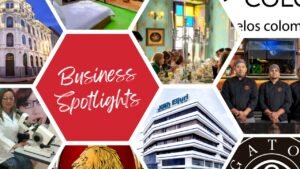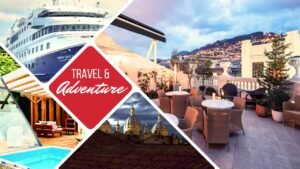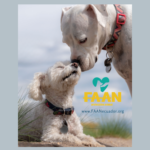TRAVEL & ADVENTURE – Hopping Adventures In the Galapagos Island
-
Expats Magazine Group

- April 3, 2024
Cuenca Expats Magazine – Issue 44
Photos: Courtesy of Metropolitan Touring and Cuenca Expats Magazine
Ed. Note: This is the fourth in a four-part series exploring the Galapagos Islands.
After setting sail during lunch, we arrived for our first exploration that afternoon at Dragon Hill on the north side of Santa Cruz Island. Only the south side of the island is populated. (The largest city in the Galapagos, Puerto Ayora, is located there). We gathered into our five groups and disembarked into five tenders that took us to shore. Each group was named after an iconic species (Our English-speaking group was the Bobbies.), and each had their own naturalist guide to give everyone personal attention.
Our guide was Fatima. She was born on the mainland but moved to the islands at 14. She had a college degree in the subject, and there was not one question on the fauna or flora she could not answer during the entire trip—the perfect guide for us. Each group landed at a different location, so our group of 13 explorers were the only other people we saw during the trip. We were able to see the land and marine iguanas, Galapagos sea lions, Blue-footed Boobies, and some frigate birds. Back on ship, we took a quick shower so we would not be late for the nightly half-hour ECO Moment (Explore Conserve Observe) on various island subjects of interest. Tonight’s talk was on the octopus.
After the ECO Moment and before dinner we were formally introduced to the captain, officers and expedition team accompting us on the voyage. After a welcoming toast, we had another outstanding meal. We met a foodie influencer who was on the trip. He can explain the gastronomy much better than we can, so here’s a link to his observations on eating aboard the Santa Cruz II.
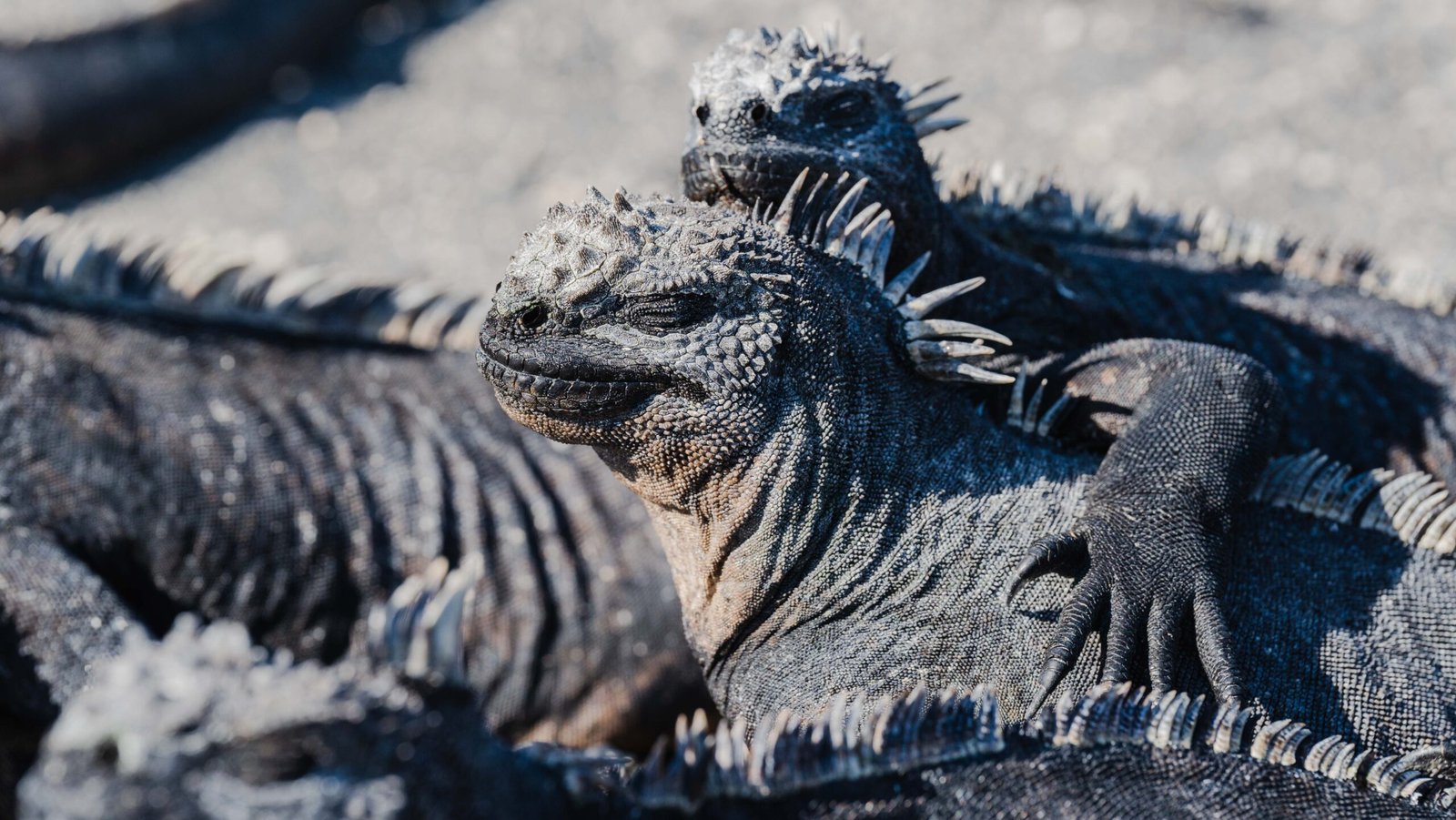
The second day of adventure took us to the largest island in the Galapagos—Isabela Island. If you look on a map, it looks like a large sea horse. It is also one of the four islands Darwin explored. After the daily, appetizing, all-you-can-eat breakfast spread the chefs prepared, we had our first water activity. So, we gathered on the upper deck and got fitted with snorkeling gear (mask, fins, life jacket, and if you wished, you could use a wet suit.) You had a swim bag and kept this gear throughout the trip. We boarded our tender by group and set off for some fun to explore by water the coves of the island. Here we saw marine iguanas, numerous birds (including baby Boobies) in the cut of the cliffs, as well as sea lions. Then we returned to the ship for lunch while we sailed to the next island—Fernandina.


Around Fernandina Island, you had a choice of deep snorkeling, glass bottom boat (Yes, one was even stored on board.), or sight-seeing on the tender. There were eight of the Big 15 iconic species to be seen, plus all the underwater life. We were surprised at the speed of the swimming tortoises. On board again, we tried one of the two large hot tubs and relaxed a little before dinner. After a Corden Blu planned diner, and since it had been a long day, we got some sleep, which wasn’t hard given the gentle movement of the ship as we sailed to our next destination. Speaking of movement, did anyone get sea sick? Not to our knowledge, as the ship was large enough to give smooth sailing.
That night we sailed back to Santa Cruz Island. This time to the south end and to the port of Puerto Ayora, the largest city on the four inhabited islands. Upon landing, we set off for the Charles Darwin Research Station and spent a couple of hours learning how they are protecting the different species of tortoises on the islands. During the era of whaling, it’s estimated that over 200,000 tortoises were used as food for the ships and as many as four tortoise species became extinct. BTW, the saddle-back tortoise has longer legs and neck as they have to reach farther for low vegetation; the high land tortoises have shorter neck and legs as they reside in more dense areas. One could spend all day there looking at the exhibits, but we had plans to the see the giant tortoises in their natural habitat.
For those wishing, we stopped to get mountain bikes and rode the four miles to the site. It wasn’t a flat road, but one of many fairly steep hills that challenged those who have not ridden in a while. We all made it to the Rancho for a delicious buffet lunch. After lunch, we walked the property for a few hours looking at the 65 or so giant tortoises on this reserve. Some were over 200 pounds and estimated to be at least 100 years old. They didn’t at all seem bothered by our presence, although we could get no closer than a couple of feet from them per regulations.
We boarded a bus to the Rancho El Manzanillo, which had previously been a dairy farm in the highlands.
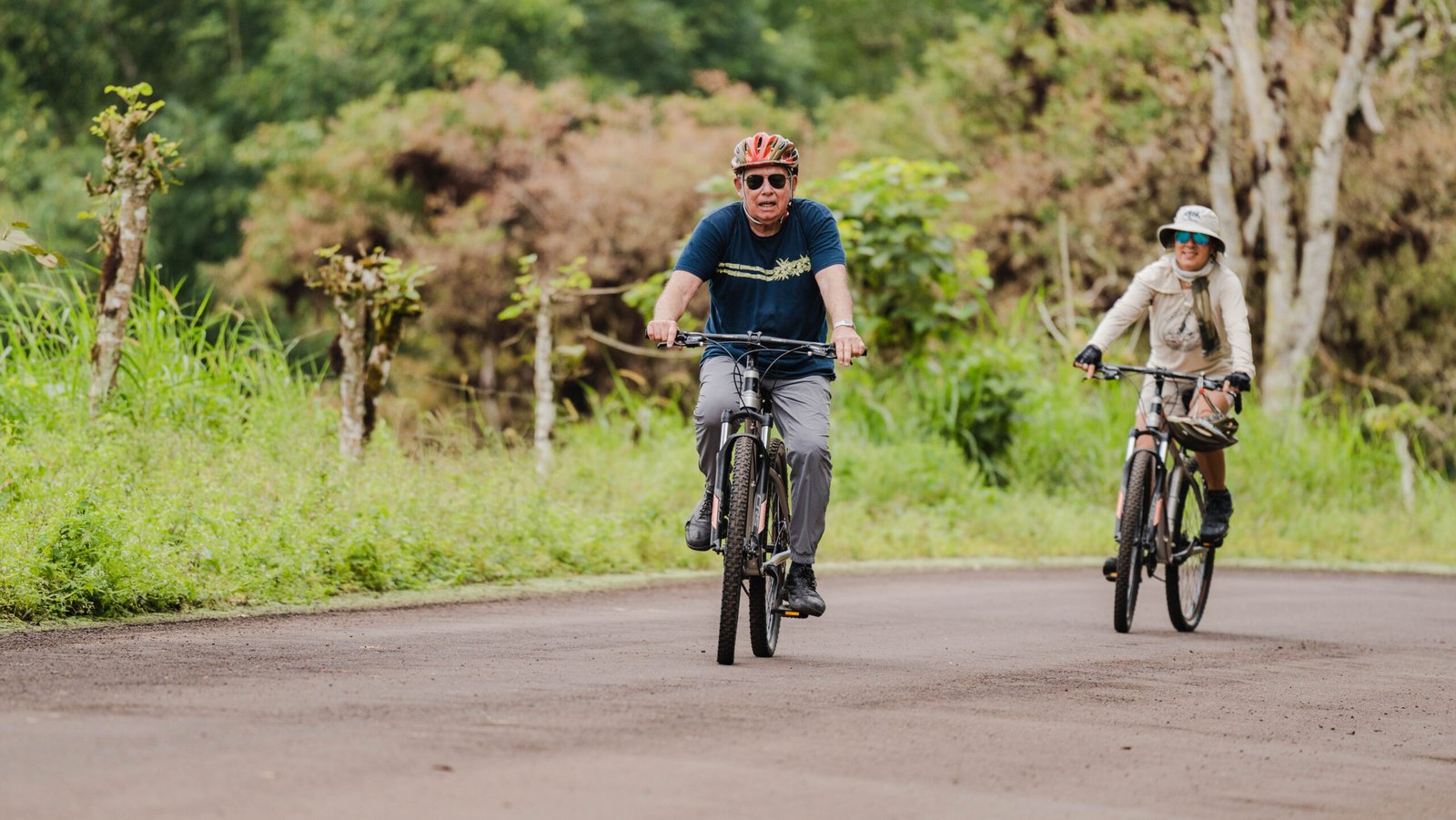
We then got back on the bus and drove for half an hour or so back to town. The two-lane highway was in excellent condition, and there was a lighted (by solar panels) pedestrian/bike path the total length of the highway. I wish we had the same in Cuenca!We had a couple of hours of free time, so we walked the main street Back on the Santa Cruz II, we had a 2×1 cocktail party with yummy appetizers on the afterdeck.
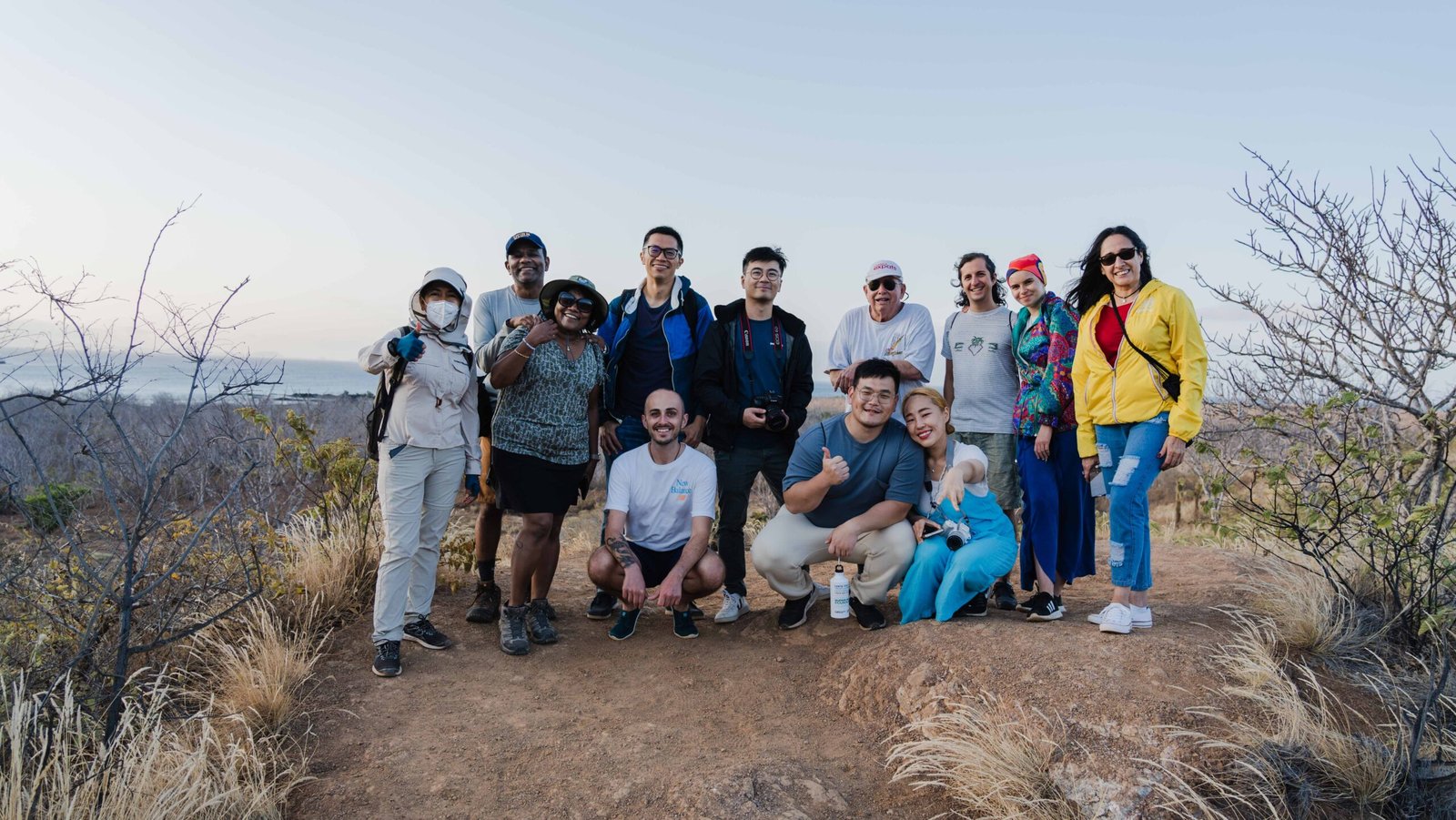
We were treated with a beautiful sunset to the west, followed by a full moon to the east rising above the outlines of the islands, and listened to live chamber music to complete the evening—a very memorable time for all. It took no nudging to go off to bed and sleep soundly as we sailed to Floreana Island (also one of the islands Darwin visited).
Breakfast was the normal 7:30 am, and we boarded the tender around 9 am. We did a water landing and walked to what was one of the most amazing sites on the trip—the world’s most unusual post office! During the whaling times in the 18th century, whaling ships might not return to their home port for 3-5 years. So, they devised a way of delivering mail home. Floreana was a popular spot to load provisions, so according to local legend, sailors took a wooden whisky barrel and left letters in it. By tradition, when a ship anchored, the sailors would pick through the letters and if their home port was close by, they agreed to hand deliver the letters to the recipients.
This Galapagos tradition lives on. Our group went through the letters and a couple of members said they lived close enough to deliver them and carry on the tradition. We saw one letter addressed to someone in Greenland—I wonder how long it will be to hand delivery that one? We boarded our tender and went to two other coves. Some in the group decided to shallow snorkel while some went to another cove to kayak. Yenis elected to kayak and she was glad she did as their group spotted four of the Galapagos penguins, the only time they were spotted on the trip, and yes, there are penguins on the equator. We awoke the next morning back to Baltra Island where our adventure started five days earlier. We disembarked for the last time.
As our tender passed the ship, the captain saluted us with a blast from the ship’s foghorn, and a pod of dolphins swam by as if to say goodbye as well.
Our adventure didn’t end at the port of Baltra. We had heard awesome things about Metropolitan Touring’s Finch Bay Hotel, so we decided to stay in the islands another day and take a look.
Located in Puerto Ayora on the island of Santa Cruz, this boutique hotel is right on the beach, beautifully landscaped and with a pool facing the ocean cove. Finch Bay has only 27 rooms, with outdoor and indoor dining. We arrived at lunch time, and after checking in, had a light meal and then were shown the facilities by the general manager. Finch Bay even has nestled in a grove of trees a fully equipped spa for relaxation, health care and self-healing. That night’s meal was outstanding (as are the meals in all Metropolitan Touring operations). Relaxing at Finch Bay was the perfect end after a week’s activity on the Santa Cruz II—the best of both worlds. We would have liked to have stayed longer, but the next morning we had to travel back to Baltra Island for our LATAM flight back to the mainland.
As we flew the hour and a half back to the mainland, we could not help but reflect on the fact not many people in the world have ever had the chance to visit the Galapagos Islands.
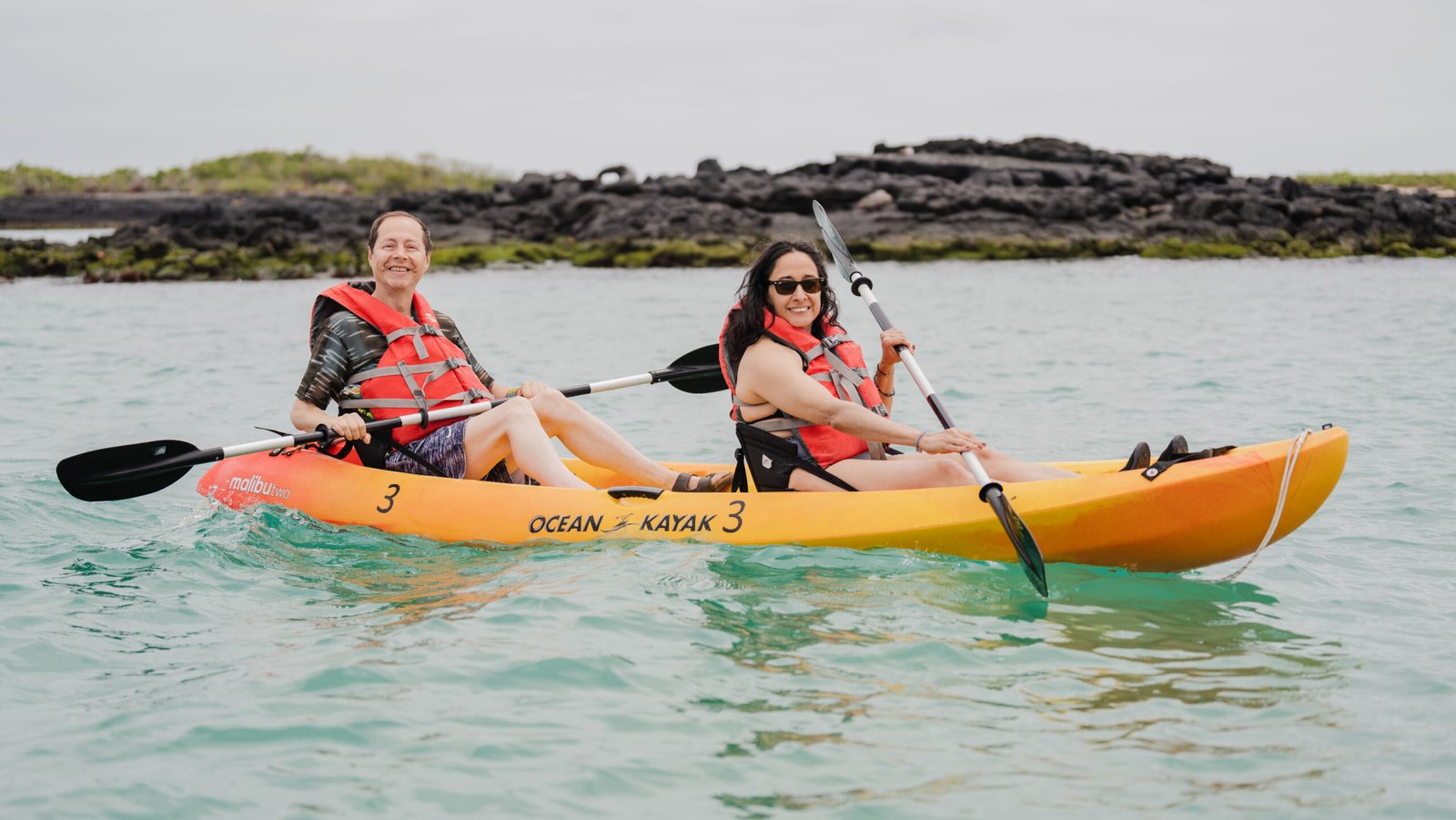
Thanks to Metropolitan Touring and LATAM Airlines, we were fortunate enough to do so. We hope you will have the chance to experience this life-changing journey as well.



